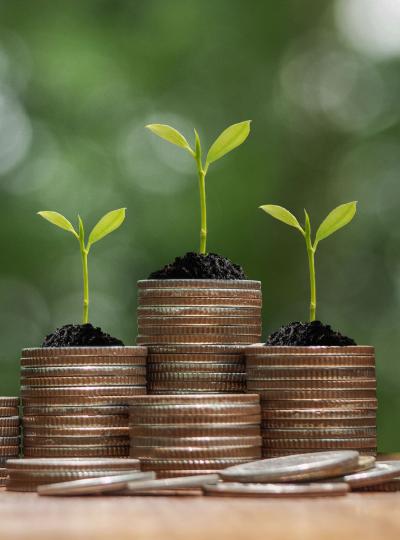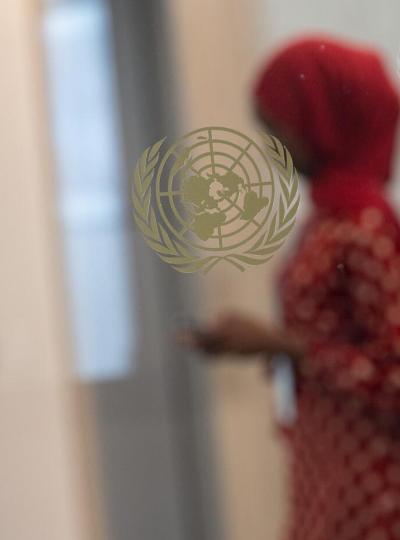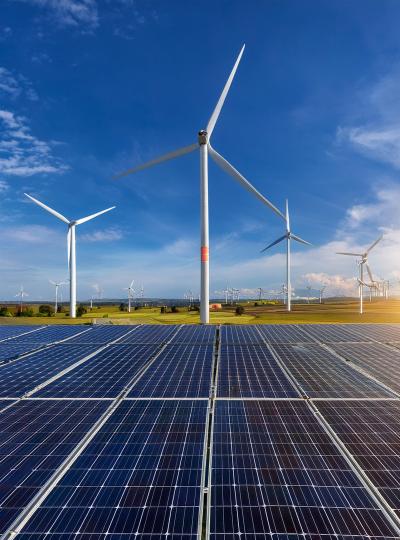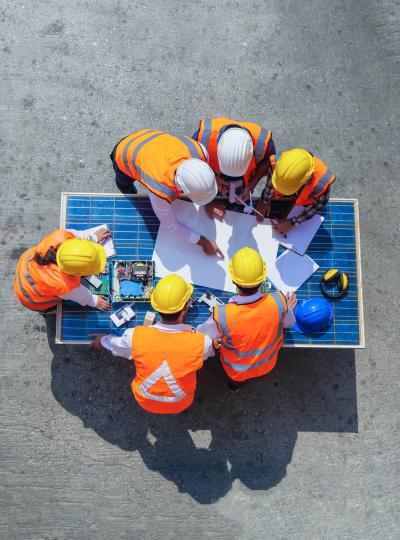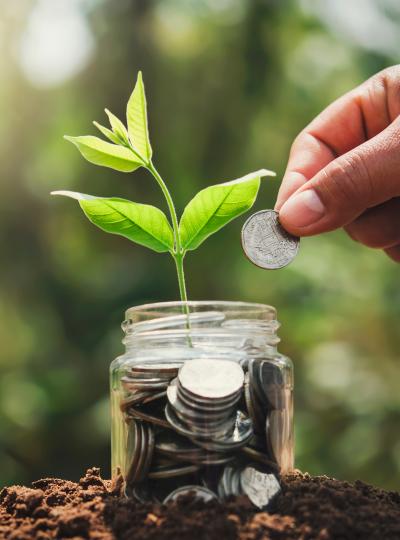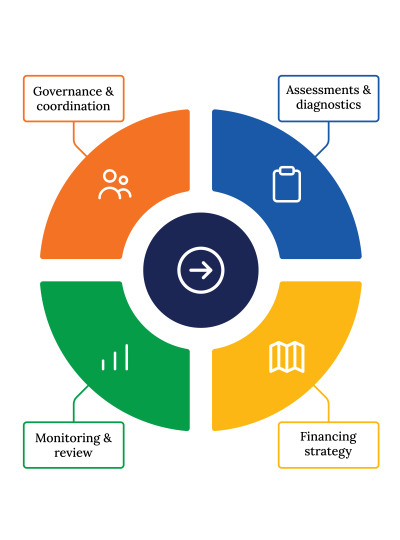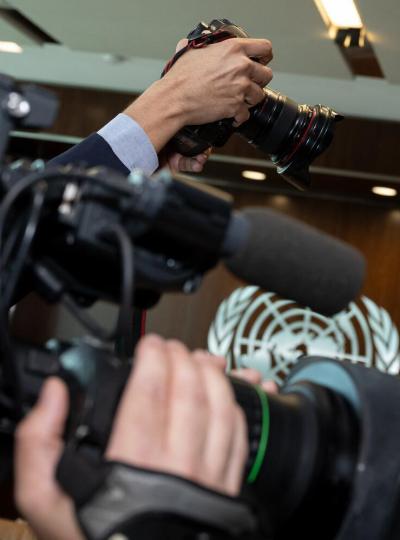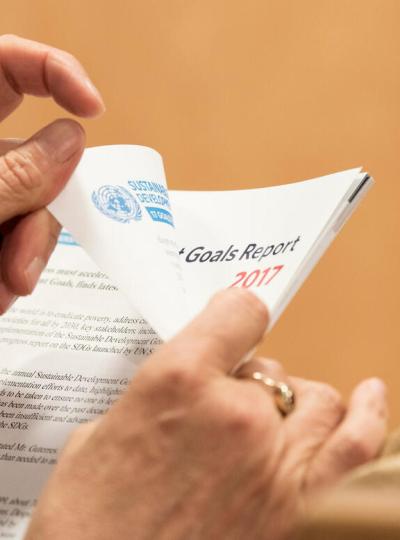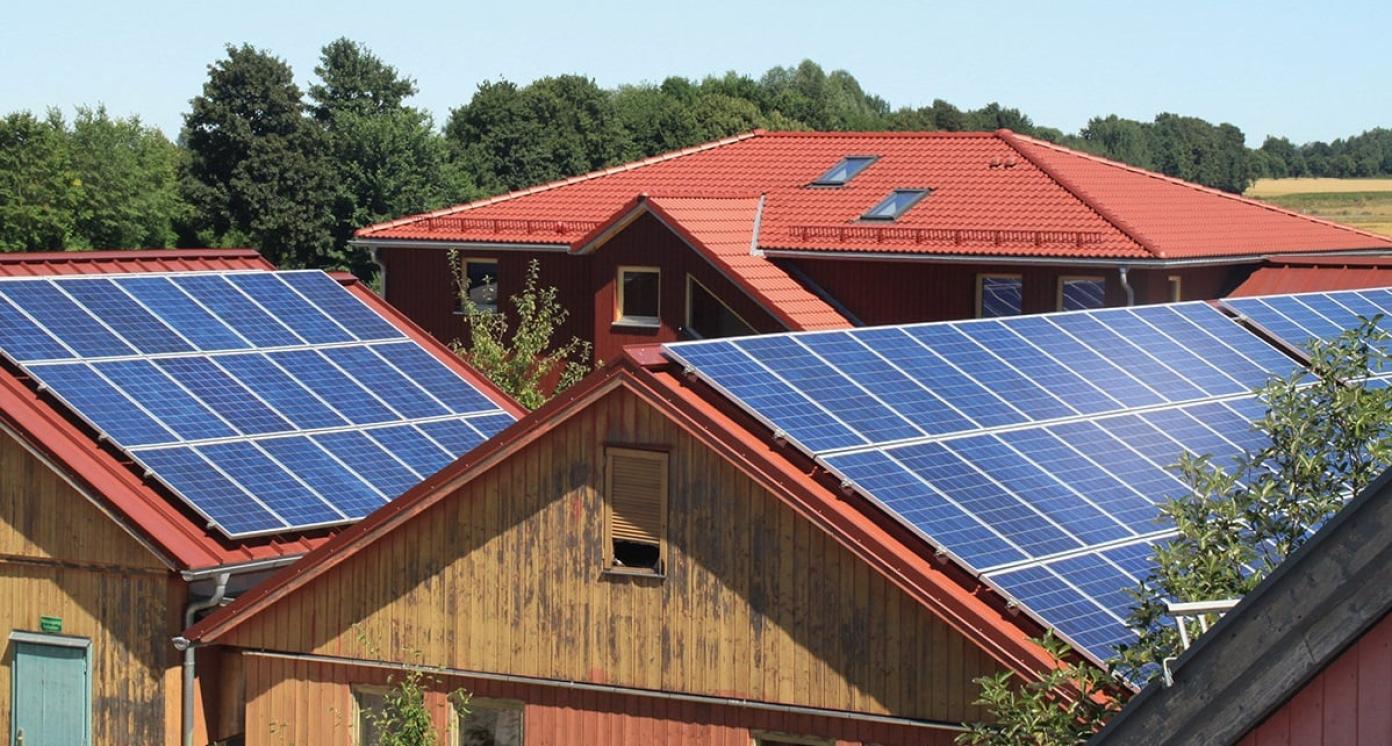Distributed Renewable Energy
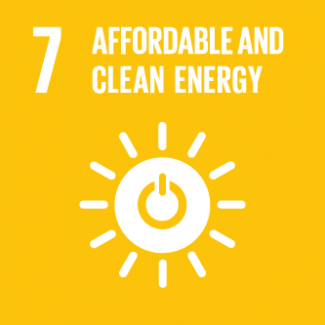
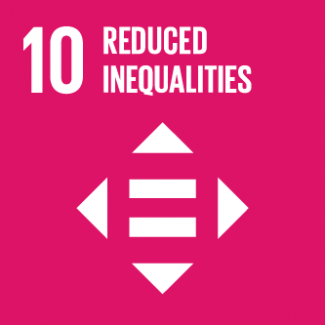
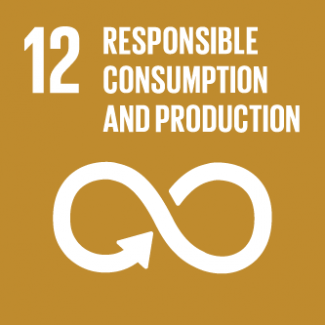
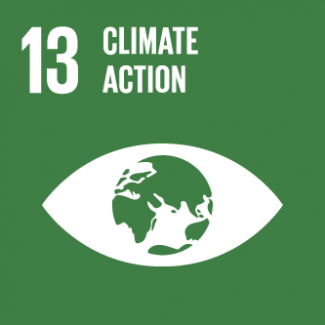
Business Model Description
The distributed renewable energy model focuses on small-scale generation systems such as rooftop solar panels or small wind turbines installed at residential or commercial properties. Allowing users to generate their own electricity while potentially selling excess power back to the grid. This approach enhances local resilience against power outages and reduces transmission losses.
Expected Impact
Empower consumers by providing energy production. This decentralization enhances energy security and promotes sustainability.
How is this information gathered?
Investment opportunities with potential to contribute to sustainable development are based on country-level SDG Investor Maps.
Disclaimer
UNDP, the Private Finance for the SDGs, and their affiliates (collectively “UNDP”) do not seek or solicit investment for programmes, projects, or opportunities described on this site (collectively “Programmes”) or any other Programmes, and nothing on this page should constitute a solicitation for investment. The actors listed on this site are not partners of UNDP, and their inclusion should not be construed as an endorsement or recommendation by UNDP for any relationship or investment.
The descriptions on this page are provided for informational purposes only. Only companies and enterprises that appear under the case study tab have been validated and vetted through UNDP programmes such as the Growth Stage Impact Ventures (GSIV), Business Call to Action (BCtA), or through other UN agencies. Even then, under no circumstances should their appearance on this website be construed as an endorsement for any relationship or investment. UNDP assumes no liability for investment losses directly or indirectly resulting from recommendations made, implied, or inferred by its research. Likewise, UNDP assumes no claim to investment gains directly or indirectly resulting from trading profits, investment management, or advisory fees obtained by following investment recommendations made, implied, or inferred by its research.
Investment involves risk, and all investments should be made with the supervision of a professional investment manager or advisor. The materials on the website are not an offer to sell or a solicitation of an offer to buy any investment, security, or commodity, nor shall any security be offered or sold to any person, in any jurisdiction in which such offer would be unlawful under the securities laws of such jurisdiction.
Country & Regions
Sector Classification
Renewable Resources and Alternative Energy
Jamaica's selection of renewable energy aligns with its development needs and policy priorities. The country faces high electricity costs due to reliance on imported fossil fuels, making energy diversification critical. The government aims to achieve 50% renewable energy by 2030, leveraging abundant solar and wind resources to enhance climate resilience and reduce carbon emissions.
Policy Dimension
Strong government commitment, international partnerships, and incentives for private investment are driving progress. However, consistent enforcement of policies remains crucial for achieving long-term targets
Investment opportunities in Jamaica's renewable energy sector include abundant sunshine and strong winds provide excellent potential for expanding solar PV arrays and wind farms
Social Dimension
Renewable energy projects improve access to affordable electricity, empower communities through local ownership models, and enhance resilience against natural disasters like hurricanes
Alternative Energy
Alternative energy sources like solar, wind, and biomass offer sustainable solutions to enhance energy security, reduce greenhouse gas emissions, and support economic growth. These initiatives align with global trends in energy transition and sustainable development goals.
Environmental Dimension
Transitioning to alternative energy mitigates greenhouse gas emissions, supports climate resilience, and protects Jamaica’s natural ecosystems from the adverse effects of fossil fuel use
Gender inequalities and marginalization issues
Gender inequalities and marginalization pose significant challenges in Jamaica’s renewable energy transition. Women and marginalized communities often face barriers to participation in the energy sector, including limited access to education, training, and economic opportunities.
Investment opportunities introduction
Jamaica’s alternative energy sector offers significant investment opportunities, driven by its abundant renewable resources and supportive policy frameworks.
Wind Technology and Project Developers
Pipeline Opportunity
Distributed Renewable Energy
The distributed renewable energy model focuses on small-scale generation systems such as rooftop solar panels or small wind turbines installed at residential or commercial properties. Allowing users to generate their own electricity while potentially selling excess power back to the grid. This approach enhances local resilience against power outages and reduces transmission losses.
Business Case
Market Size and Environment
USD 100 million - USD 1 billion
Numbers of Individuals and commercials with access to renewable energy solutions.
Electricity Costs and Consumer Demand: Jamaica’s electricity rates are among the highest in the region. High costs drive consumer interest in distributed renewable energy solutions, which offer financial savings and energy independence. Residential and commercial sectors account for 80% of electricity consumption, creating strong demand for decentralized systems.
Current Renewable Energy Capacity vs. Target: Jamaica’s renewable energy capacity stands at 187 MW, representing 12% of the electricity grid. The government aims to increase this to 50% by 2030, requiring an additional 213 MW to reach a total capacity of approximately 400 MW.
Indicative Return
> 25%
Renewable Energy Capacity Expansion: Recent investments, such as the installation of 6,368 rooftop solar panels across government facilities, save 5 million kWh annually. (https://www.jamaicaobserver.com/2025/02/15/jamaica-save-5-million-kwh-annually-following-us4m-energy-investment/)
The SESR-Jamaica program mobilized $5.4 million in private sector capital, supporting over 24 businesses with distributed solar systems. These installations collectively account for 2.4 MW of new solar capacity, showcasing the financial viability and scalability of distributed renewable energy in Jamaica. (https://cadmusgroup.com/case-studies/powering-jamaican-businesses-through-solar/)
Investment Timeframe
Short Term (0–5 years)
Government Targets by 2030: Jamaica’s goal of achieving 50% renewable energy by 2030 necessitates rapid deployment of distributed systems within the next five years, aligning with short-term investments to bridge the gap between current capacity and the target
Net Metering Policy: Improved net metering for PV installations up to 100 kW has incentivized residential and commercial adoption, creating a favorable environment for distributed renewable energy investments over the next five years.
Grid Stability Needs: Frequent outages and aging grid infrastructure necessitate decentralized solutions like battery-backed solar PV systems. Distributed renewable energy investments can mitigate these issues within five years, improving energy resilience
Ticket Size
< USD 500,000
Market Risks & Scale Obstacles
Market - Highly Regulated
Capital - CapEx Intensive
Impact Case
Sustainable Development Need
Energy Poverty and Inequality: Jamaica faces high electricity costs averaging $0.39/kWh, making energy access unaffordable for many low-income households.
Climate Vulnerability and Carbon Emissions: Jamaica is highly vulnerable to climate change impacts, including hurricanes and rising sea levels, which disrupt energy infrastructure.
Energy Independence and Economic Stability: Jamaica imports over 90% of its energy in the form of fossil fuels, leading to economic instability due to volatile global oil prices.
Gender & Marginalisation
Gender Inequalities in Renewable Energy Access: Women in Jamaica face barriers to participating in renewable energy projects, including limited access to financing and technical training.
Expected Development Outcome
Energy Poverty Reduction: The IOA’s distributed renewable energy model directly addresses energy poverty by providing affordable electricity to low-income households. For example, rooftop solar systems reduce monthly energy bills by up to 30%, improving access and affordability for marginalized communities, while also reducing reliance on costly and polluting alternatives like kerosene.
Climate Resilience and Emission Reduction: By replacing fossil fuels with renewable energy, the IOA reduces carbon emissions and enhances climate resilience. Distributed systems like solar and battery storage ensure uninterrupted power during outages caused by hurricanes, safeguarding vulnerable populations and critical infrastructure.
Economic Stability and Job Creation: The IOA promotes energy independence, reducing Jamaica’s reliance on imported fossil fuels and stabilizing energy costs. Additionally, the deployment of distributed systems creates local jobs in installation, maintenance, and manufacturing, fostering economic growth and skill development in the renewable energy sector.
Gender & Marginalisation
Empowerment of Marginalized Communities: By reducing high electricity costs through distributed renewable energy systems, the IOA empowers low-income households, particularly women who bear the burden of unpaid domestic work. This improves access to affordable energy, alleviating energy poverty and supporting socioeconomic development.
Primary SDGs addressed

7.1.1 Proportion of population with access to electricity
7.2.1 Renewable energy share in the total final energy consumption
7.3.1 Energy intensity measured in terms of primary energy and GDP
7.1.1: Jamaica continues to have near-universal access to electricity, with an estimated 99.4 per cent of the population. The gap in universal access is due to the status of the rural population, whose access reached 98.6 per cent in 2019.
7.2.1: In 2020, only 11% of Jamaica’s electricity was generated from renewable sources (wind: 5.87%, solar: 2.60%, hydro: 2.85%), with fossil fuels dominating at 89%. This underscores the need for scaling distributed renewable energy systems to meet the national target of 50% renewable energy by 2030.
7.3.1: Jamaica’s energy sector suffers from inefficiencies, with 26.5% of electricity lost in transmission and distribution as of 2020. Distributed renewable energy systems can reduce these losses by decentralizing power generation and improving overall energy efficiency.
7.1.1: By 2030, Jamaica aims to maintain universal electricity access (currently at 100%) while ensuring affordability and reliability through renewable energy solutions. This includes increasing distributed renewable energy systems to reduce costs and improve resilience, particularly in underserved areas.
7.2.1: Jamaica’s target is to generate 50% of its electricity from renewable sources by 2030, up from the current 11% share. This includes scaling solar, wind, and biomass energy projects to replace fossil fuels and align with the National Renewable Energy Policy goals
7.3.1: Jamaica aims to significantly reduce energy intensity by 2030 through improved energy efficiency measures and decentralized renewable systems like rooftop solar. This will lower transmission losses (currently at 26.5%) and enhance overall energy productivity
Secondary SDGs addressed



Directly impacted stakeholders
People
Planet
Corporates
Public sector
Indirectly impacted stakeholders
Gender inequality and/or marginalization
Public sector
Outcome Risks
Grid Instability: Rapid integration of intermittent renewable energy sources without adequate grid upgrades could lead to power fluctuations and blackouts, affecting businesses and households, particularly in vulnerable communities with less resilient infrastructure.
Economic Disruption: The shift away from fossil fuels could lead to job losses in traditional energy sectors, potentially causing economic hardship in communities dependent on these industries if adequate retraining and transition support is not provided
Technological Dependency: Overreliance on imported renewable energy technologies may create new forms of energy dependency, potentially hindering long-term energy security and local manufacturing opportunities.
Impact Risks
External Risk Unpredictable weather conditions, such as prolonged droughts or hurricanes, could disrupt renewable energy output, especially for solar and wind systems. These external factors may reduce the reliability of distributed systems and compromise energy access goals.
Drop-off Risk Positive impacts, such as reduced electricity costs and carbon emissions, may not endure if systems are poorly maintained or if financing mechanisms for upgrades are unavailable. This could lead to a decline in system performance over time.
Execution Risk: Delays in project implementation due to bureaucratic hurdles, supply chain disruptions, or insufficient technical expertise may prevent the timely deployment of distributed renewable energy systems. This could delay expected energy savings and emission reductions, undermining the IOA’s effectiveness.
Gender inequality and/or marginalization risk: Failure to engage marginalized groups, such as rural women or youth, in renewable energy initiatives may perpetuate existing inequalities. This risk arises if training programs or financing mechanisms are not inclusive, limiting the social impact of the IOA.
Impact Classification
What
Reduce energy costs for underserved households and businesses, increasing renewable energy adoption, and cutting carbon emissions.
Who
Low-income households, rural communities, and small businesses affected by high electricity costs. Marginalized areas also benefit through energy access and job opportunities
Risk
Execution risks, such as delays due to regulatory hurdles or supply chain disruptions. Drop-off risks in systems poorly maintained, reducing long-term impacts. Stakeholder participation r
How Much
Targets tens of thousands of households and businesses over a decade. This will contribute to Jamaica’s goal of achieving 50% renewable energy by 2030, with measurable reductions
Impact Thesis
Empower consumers by providing energy production. This decentralization enhances energy security and promotes sustainability.
Enabling Environment
Policy Environment
Jamaica Water Sector Policy outlines objectives for water resources, urban and rural water management, drainage, and irrigation. Emphasizing a shift from development to restoration and quality enhancement, it details strategies and action plans for water supply, sewerage, and irrigation.
Financial Environment
Financial incentives: Organizations to facilitate partnerships (Public-Private Partnerships and International Development Partnerships)
Regulatory Environment
The Office of Utilities Regulation regulates the water and sewerage sector in Jamaica which includes the National Water Commission (the main provider of water and sewerage services throughout the island), other water and sewerage providers, and the National Irrigation Commission.
The NWC, governed by the 1980 Act, is Jamaica's primary water service provider, handling potable water supply, wastewater services, aligning with the 2019 Water Sector Policy and Vision 2030, directly serving 75.0% of the population.
Marketplace Participants
Public-Private Partnership
National Water Commission (NWC) Water Resources Authority (WRA) National Irrigation Commission (NIC) National Environment and Planning Agency (NEPA) Solid Waste Management Authority and Environmental Health Department of the Ministry of Health and Wellness (MOH&W) Ministry of Economic Growth and Job Creation Office of Utilities Regulation (OUR) Development Bank of Jamaica (DBJ)

